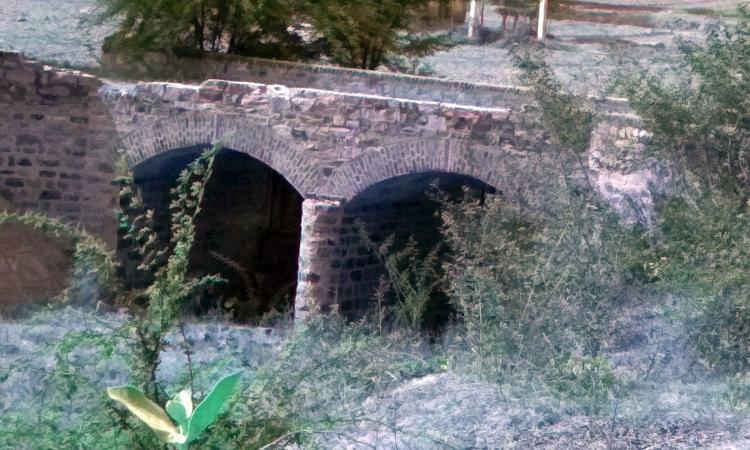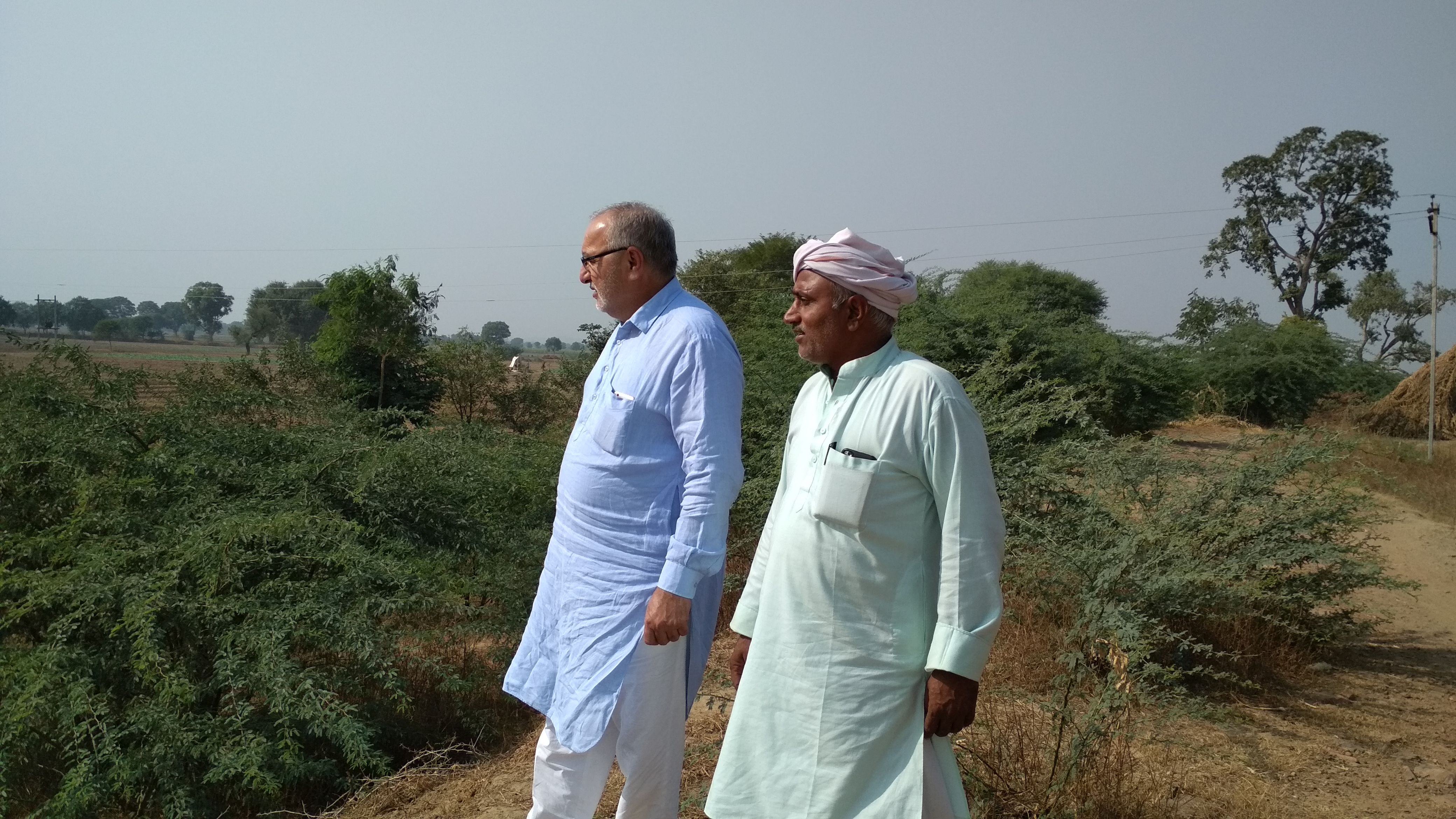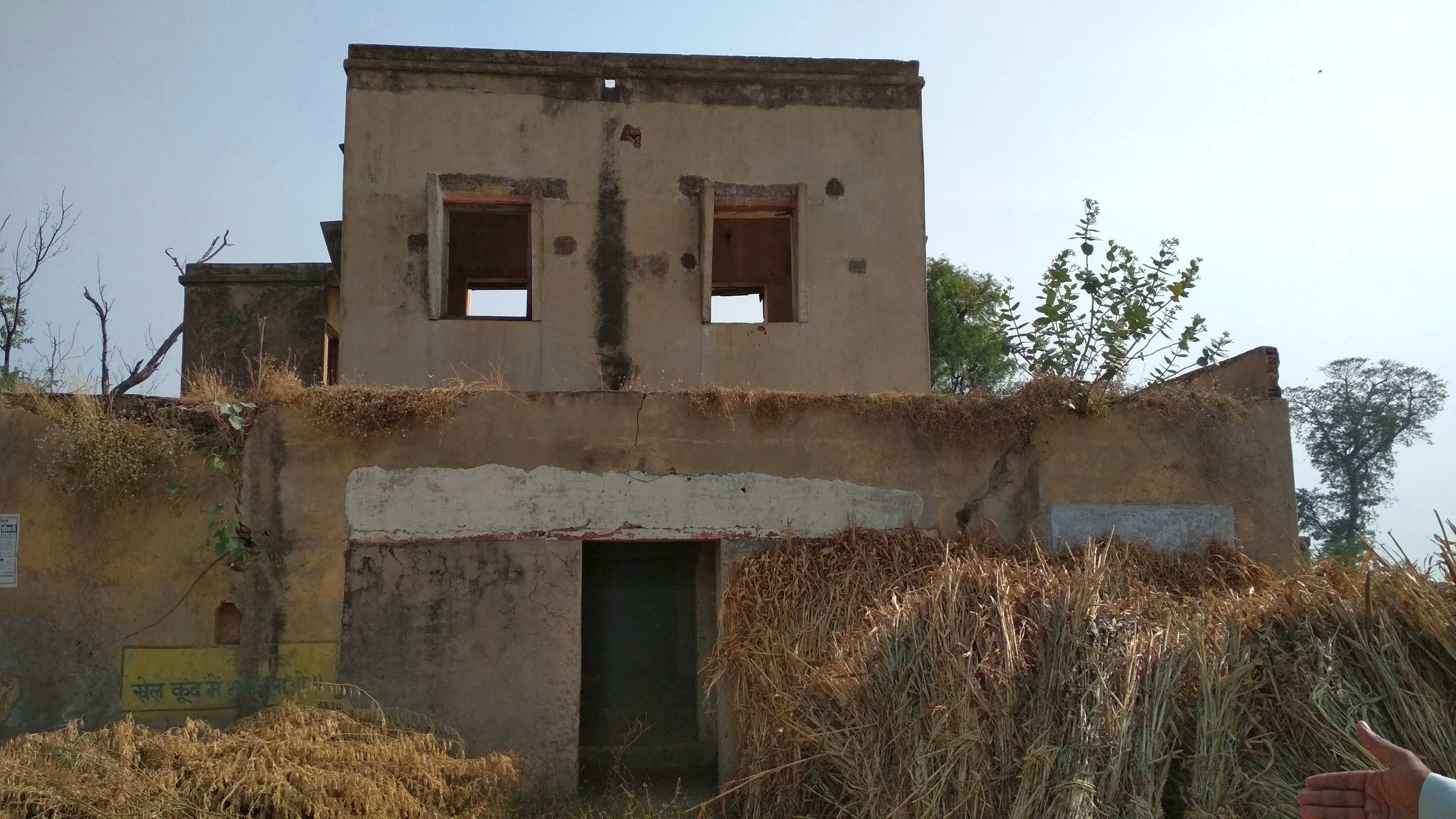
Sikri is a small village that lies 65 km north-west of Bharatpur on the Alwar road. The village used to depend on a traditional irrigation system that assured water throughout the year. A local saying related to the water availability at Sikri goes thus: Lakh daal le chittri, jay rahoongi Sikri (You may put lakhs of fetters to stop it, but the waters will still reach Sikri). This saying has lost its sheen today as the village is now finding itself in the centre of a struggle for water among farmers.
Farmers from the area got together for a mahapanchayat in Sikri in March 2018 and at a nearby village of Bela in April 2018 to demand the diversion of Yamuna water from Haryana through the Gurgaon canal to the irrigation project at Sikri, known as the Sikri bandh. The agitation was led by Mohan Singh Gujjar, the president of the Sikri Kisan Sangharsh Samiti, a local farmers’ organisation that has been demanding that the government provides water, electricity and other basic facilities in the area.

Take a quick walk through the village, and these concerns seem completely justified. Farmers grow fodder crops such as bajra and jowar during the kharif (monsoon) season. Mustard is the main crop in the area during the rabi (winter) season and Bharatpur is the largest mustard growing division covering about 48 percent of the total production of Rajasthan. “There has been a shift from the cultivation of cereal crops to oilseeds over the last few decades,” says Lakhvir Singh, sarpanch of Sikri gram panchayat.
Oilseed crops like mustard are grown for cash in the dry region that gets just about 664 mm of rainfall in a year. “The crop has seen a lot of price fluctuation due to cheaper imports of palm oil by India, yet farmers in the area don’t have an adequate option in crops to shift since there is not enough water for irrigation in the area,” says Singh.
Sikri bandh goes dry
The main source of surface irrigation here is the Sikri bandh, a diversion irrigation system on Ruparel. This is a seasonal river that originates from Udainath hills in Thanagazi tehsil of Alwar and finally terminates in Bharatpur district. It passes through the forests of Sariska from where it draws its flow. This drainage and flood control system was initially introduced by the rulers of the erstwhile princely states of Alwar and Bharatpur.
The inundation irrigation system evolved over a period of two centuries to utilise the rainy season flows of non-perennial rivers. The system comprises the diversion of surplus river flow from the river through canals, inundation of large area and storage of water in small and medium shallow reservoirs. As per the district gazetteer of Bharatpur, “Surface water conservation is done through 197 earthen dams with a total storage capacity of about 226.7 million cubic metres. There are a total of 90 canals with a total length of 650 km. This unique system helped in replenishing the phreatic aquifer with freshwater and suppressed groundwater salinity”.
These filled up with monsoon inflows and depleted later in the months of September and October to provide inundation irrigation downstream as well as to allow the growing of rabi crops in the reservoir area. The system received waters from a canal in Natni ka Bara in Alwar district and fed the traditional earthen dams or johads in the area. An agreement dating to the princely estate times assured 55 percent of water to Bharatpur while Alwar got 45 percent water.
“The system is not operational today because of the reduced capacity of diversion channels, silting of canals, riverbeds and detention reservoirs. There is a need to restore the existing irrigation system through desilting measures. More than anything, the water flow into these structures has reduced. The system, with its elaborate canal, distributaries and sluices, is completely dry since 2012,” says Gujjar. He adds that “the construction of johads and anicuts for water harvesting from 1985 onwards by the NGO Tarun Bharat Sangh has helped improve the water availability in the upper reaches of the Ruparel in Alwar district but has inopportunely reduced the inflow into our system”.
As a result, the farmers are heavily dependent on tube wells nowadays, which have proliferated even in the canal beds. “The falling water tables have worsened the salinity problem in the area, and pulses, being highly sensitive to salinity, cannot be grown in the area any longer,” says Asiya, a farmer from Hussepur, a village adjacent to Sikri.
Not enough waters from the Gurgaon canal
The other source of irrigation that the Sikri Kisan Sangharsh Samiti has been demanding for is its share of the Yamuna waters from the Gurgaon canal. Bharatpur district has been getting much less than its due share of Yamuna waters. As per the decision of the Upper Yamuna River Board (UYRB), Rajasthan was allocated 1917 cusecs from Tajewala head and 1281 cusecs at Okhla head works. Of Rajasthan’s allocation of nine percent of Yamuna waters, the state gets very less even when excess water is available in the river between July and October every year.

“The Sikri irrigation system was expected to get 500 cusecs of irrigation water. From Okhla head works, 200 cusecs of Yamuna water is being received in Bharatpur from the Gurgaon canal that passes through Haryana and another 100 cusecs from the Bharatpur feeder that passes through Uttar Pradesh,” says Gujjar.
Rajasthan has not been getting its due share of water and has on various occasions raised the issue of short supply of Yamuna water in the various meetings of the UYRB. Committees were formed and a chief minister-level meeting was held to discuss the various issues related to water sharing.
Rajasthan’s argument is that there is unauthorised lifting of water from Gurgaon canal by Haryana farmers which the state has not taken adequate steps to control. Serious steps to stop unauthorised lifting of Rajasthan’s share of Yamuna water in its territory by joint patrolling or by other suitable mechanism are proposed. It was also decided that water should be measured at the release point in Gurgaon canal at Haryana territory and at the receiving point in Rajasthan territory.
The UYRB has also not been able to ensure compliance of its decision on water sharing. Rajasthan had requested the UYRB for joint gauging on the existing G&D (gauge & discharge) sites at Rajasthan border and requested to establish the G&D sites at the starting point of Bharatpur Feeder and Gurgaon canal.
The help of the Central Water Commission in establishing and monitoring of G&D sites was also sought but things have not moved on the ground. The unaccounted difference should be compensated by Haryana either by stopping the theft of water or by supplying extra water.
Projects in the pipeline
A new phase of the Gurgaon canal is in the offing—Gurgaon canal phase II irrigation project. It plans to provide waters to the areas that are already fed by the Gurgaon canal. “Ideally, the government should have planned the Gurgaon canal phase II for the areas left out from phase I. But in this case, there is no such proposal on the table,” says Narendra Bainsla, a member of Sikri Kisan Sangharsh Samiti.
Jats are the dominant caste in the area and wield enormous power, social and political. “That could be the reason why the proposed irrigation project went through Jat-dominated areas while villages dominated by Gujjars and Muslims were left out of the plan. The Samiti’s demand is that the government alter the proposed plan under the Gurgaon canal phase II irrigation project and divert the waters to feed the Sikri irrigation project. This project, costing about 40 crores, would entail lifting the waters by up to 27 feet. The technical feasibility report has already been prepared and this is entirely possible if there is political will,” says Lakhvir Singh.
For those like Gujjar who have been hearing the same promises for decades now, the government’s assurances ring hollow. “Time and again people come, say things will happen. Politicians come for votes and go. But no one does anything. I've been seeing this for years,” says Gujjar.
The act of supplying canal-based irrigation waters to the Sikri area is fraught with its own risks—the risk of the water being gobbled up for water-intensive crops like paddy and sugarcane. There is a need to move away from a mere restoration and increase of storage capacity of village ponds, anicuts, earthen dams, tanks and canals to improving the water use efficiency to meet the future water demand.